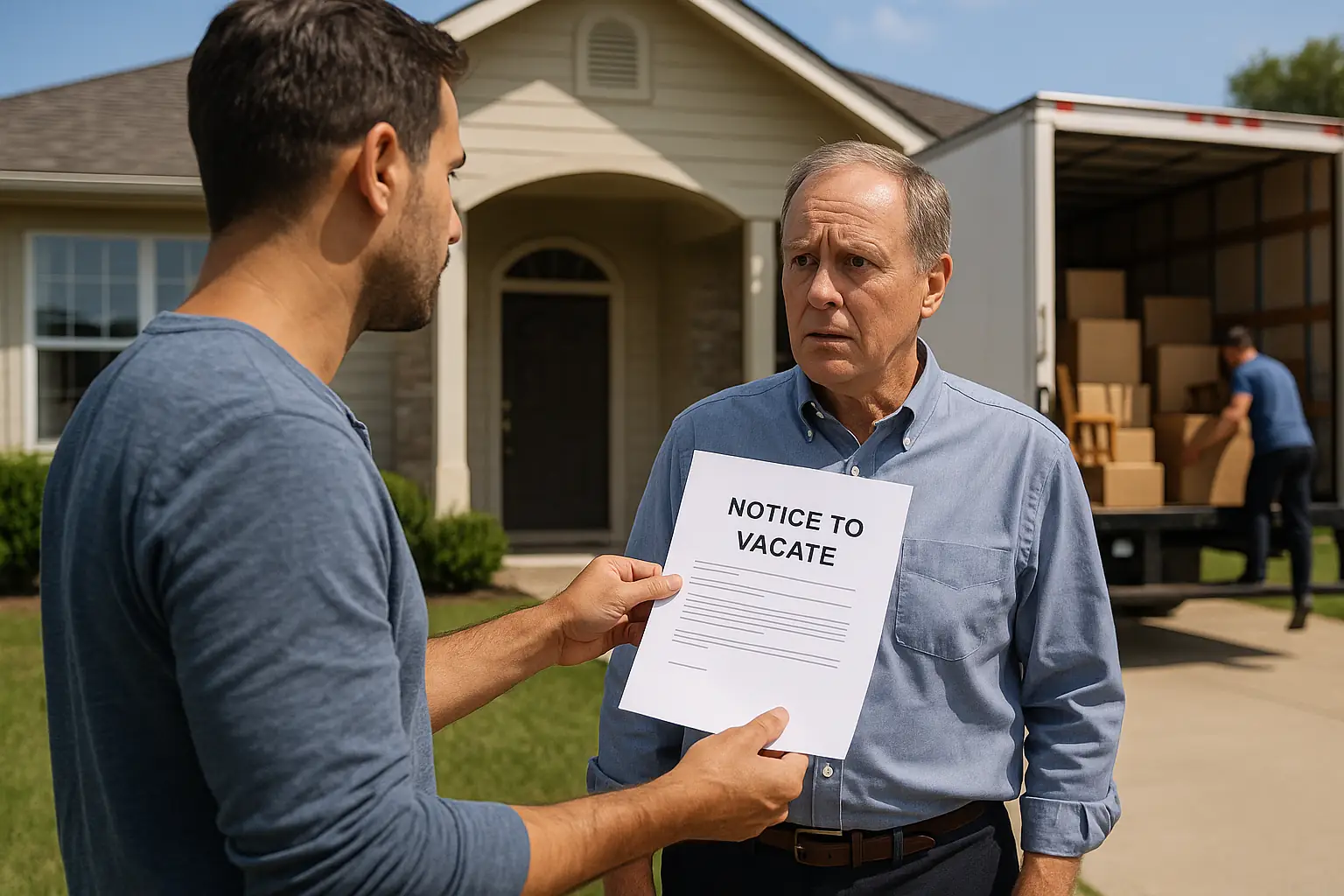So, your tenant just gave notice they're moving out. Take a deep breath... seriously, breathe. It might feel overwhelming right now—you're probably wondering: "What condition will the property be in? What's the rental market like? Will I find another good tenant?" All of those are valid questions. But here's the truth: everything will be alright. The key is preparation.
Step 1: Stay Cool and Strategize
Your tenant isn't moving out today. You've got (typically) 30 days. Use that time wisely. First, ask yourself one big question: Are you going to re-rent the home or sell it?
If you decide to sell, you'll need a different plan. But if you're re-renting, here's what to do next.
Step 2: Build Your Vendor Team
Before you even schedule anything, make sure you have a trusted team on standby. Reach out to:
- A reliable painter
- A professional housecleaner
- A go-to plumber and electrician
- A flooring installer
Having these pros in your contact list now will save you serious stress later. When the time comes, you won't be scrambling.
Step 3: Offer a Pre-Move-Out Walkthrough
This is optional, but helpful. Let your tenant know you're willing to do a pre-move-out inspection. It gives both parties a chance to identify potential issues early. Some tenants appreciate this; others prefer you wait until they leave. Either way, it's a goodwill gesture that can help avoid surprises.
Step 4: Inspect and Plan Post-Move-Out
Once the tenant has left, block off a few days to:
- Conduct a full inspection
- Assess damages vs. normal wear and tear
- Decide what repairs or improvements are necessary
Step 5: Handle the Security Deposit
Check your local and state laws. In California, for example, you have 21 days to return the tenant's remaining deposit along with an itemized list of any deductions. Make this a priority—it's not only courteous but legally required.
Step 6: Schedule Work in the Right Order
Timing is everything. Here's the most efficient order for turnover work. This sequence prevents delays and keeps everything running smoothly:
- Paint and repairs
- Plumbing and electrical fixes
- Flooring installation
- Deep Cleaning
* Tenants care about safe, functional homes. You don't need to go overboard with expensive upgrades. Stick to what matters—fix what's broken, paint if needed, and make the space inviting.
Step 7: Set the Right Rent Price
Overpricing could attract tenants who are desperate and not a good long-term fit. Underpricing may mean missed income. Do your research:
- Look at similar rentals in your neighborhood
- Consider current demand
- Assess your home's condition and features
The right rent should attract quality tenants quickly and reflect your home's true value.
Step 8: Market Like a Pro
Good marketing gets great tenants. Take clear, high-quality photos and a walk-through video. Then, write a compelling listing that highlights the home's best features.
Post your listing across multiple platforms like:
- Zillow
- Craigslist
- Facebook Marketplace
- Your property manager's site
Step 9: Screen Tenants Thoroughly
When prospects reach out:
- Schedule showings
- Require complete applications
- Run credit, income, and background checks ● Verify employment and rental history
- Follow all local and federal fair housing laws
Once approved, collect the deposit and first month’s rent, have them sign a legally binding lease, and do a move-in walkthrough before handing over the keys.
Bonus Tips for Long-Term Landlording
- Do at least one walkthrough per year
- Have your HVAC system checked every 3 years ● Increase rent annually based on the market
- Stay informed on new landlord laws
Closing Thought
You’re not just a landlord; you're managing one of your biggest investments. And yes, when a tenant gives notice, it can feel like a curveball. But with a plan in place, it doesn’t have to be stressful.
Want to Stay Ahead of the Curve?
CLICK HERE to check out our latest blog: “Understanding Property Management Reports: Key Insights for Landlords" It’s packed with insights to help you track performance, spot issues early, and boost your rental ROI.


